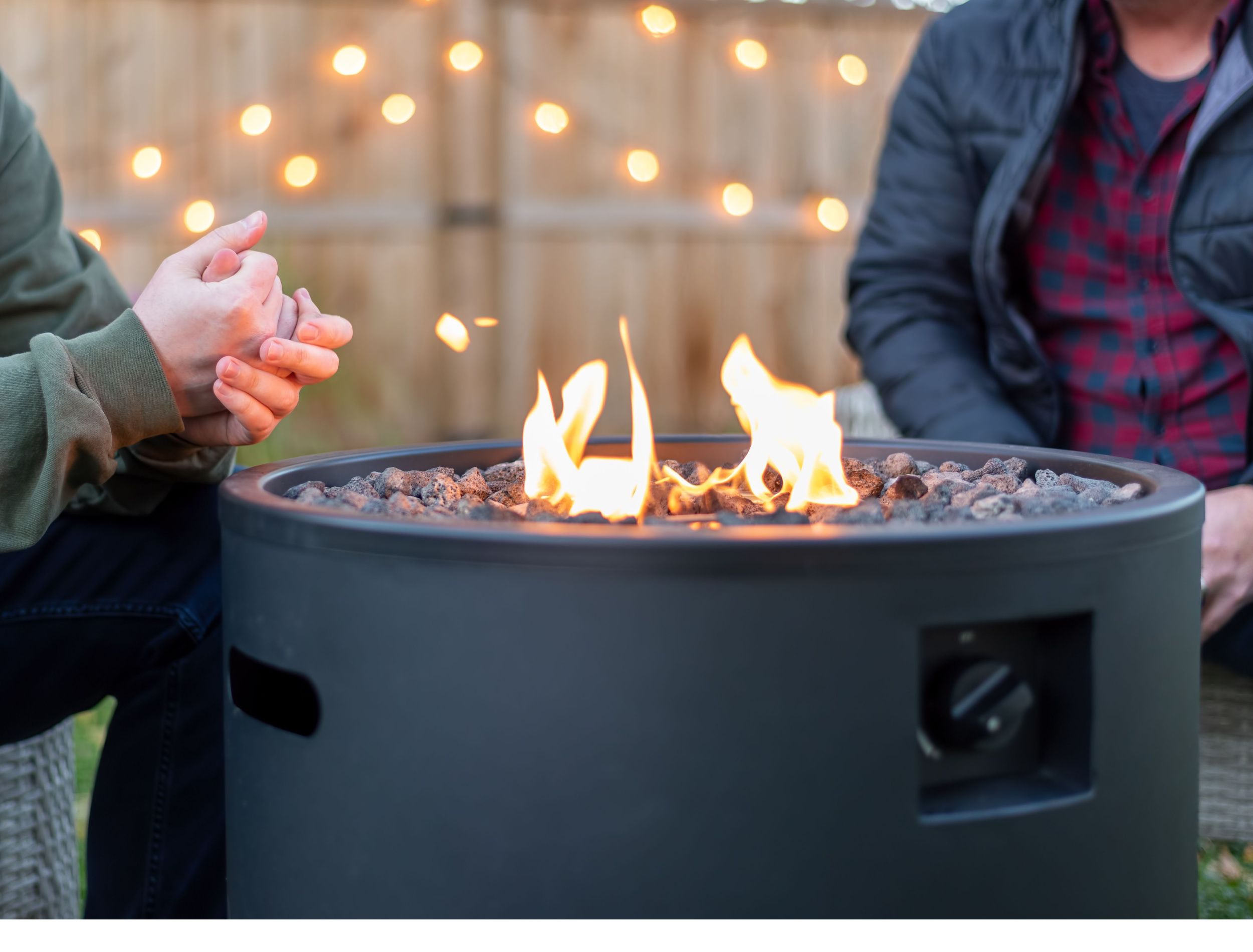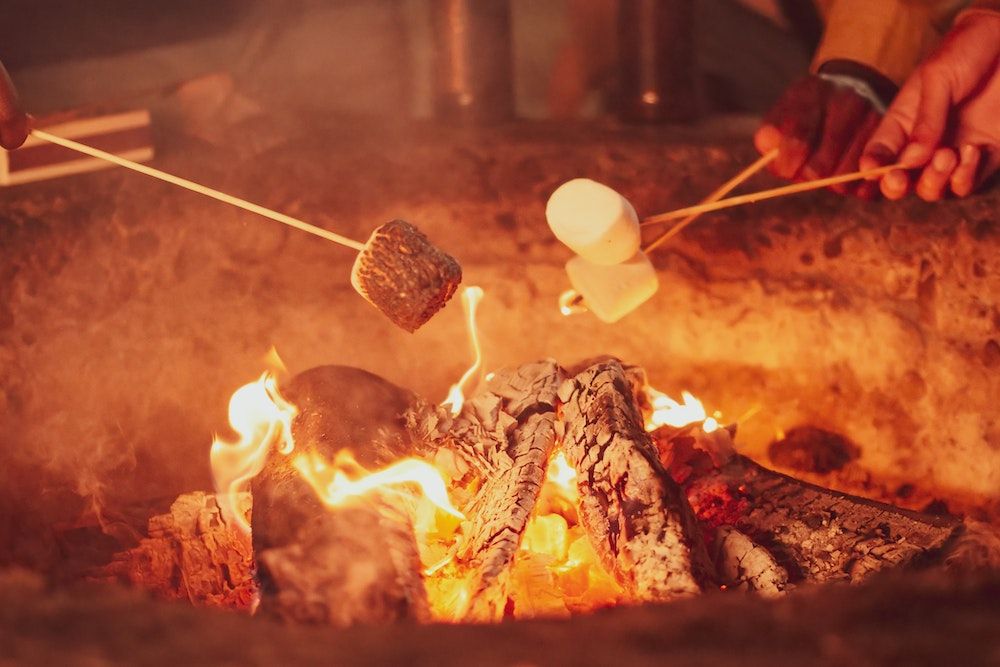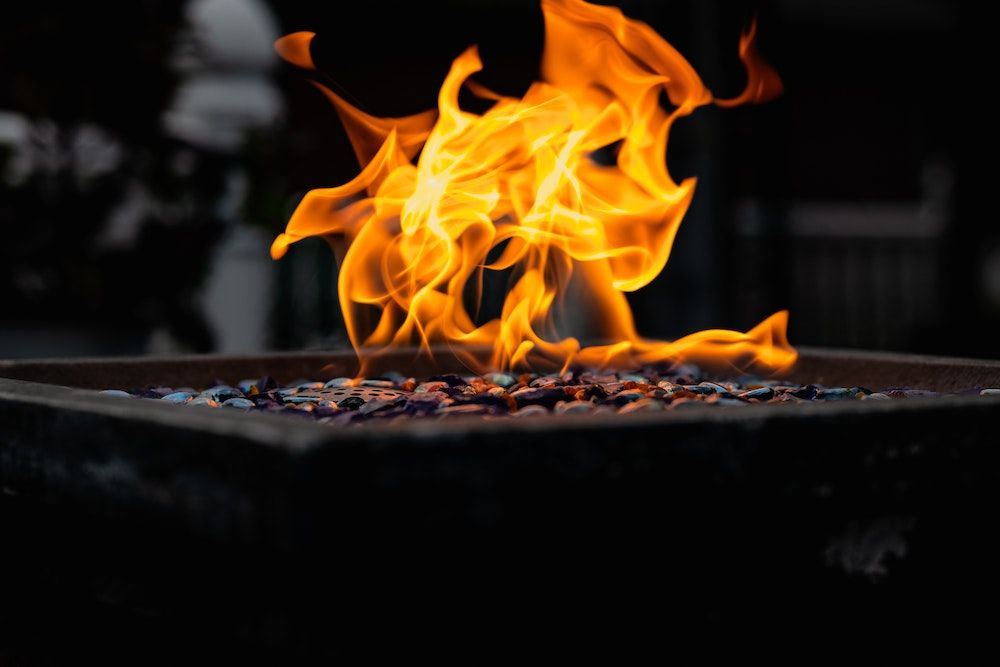Key Takeaways
- Wood fire pits provide a rustic ambiance and affordable option, with the potential for high heat output, but may be restricted in some areas and require more maintenance.
- Gas fire pits offer clean burning, convenience, and lower fire risk, although they can be more expensive and require professional installation.
- Both wood and gas fire pits have their pros and cons, so consider factors like location, budget, and personal preferences when choosing the best option for your space.
Are you sitting on the fence, trying to decide which fire pit is best for your space? Wood fire pits have long been the traditional choice for backyard fires, as a great heat source, cooktop, and affordable option. Gas fire pits, however, have been blazing the way and increasing in popularity due to their clean burn, increased safety, and convenience. Gas also offers unique and stylish options like fire tables.
Whether you are leaning on one side of the fence or the other, there are many pros and cons to both wood and gas-burning fire pits. Your location, budget, and timeline, along with your preferences, are all factors that will help you determine whether wood or gas is best for your space.
Wood Fire Pits
Wood fire pits can add a rustic touch to your space, bringing about memories of camping and roasting marshmallows over the open fire. They also have the potential to produce more than 100,000 BTU for a warmth that is hard to achieve with gas. It can also be fun, albeit sometimes frustrating, starting the fire.
One of the biggest benefits of a wood fire pit is the cost. You can install a pit yourself out of items you have around the yard, such as bricks, stones, or concrete pavers. Granite, marble, and slate are durable and heat-resistant materials, making them an ideal option. Other types of stones can also be utilized alongside a metal fire pit ring.
For those living within city limits, however, there may be restrictions on fire pits. This is because wood fires are a hazard, sending out sparks that can quickly start a fire in an urban environment. The fine-particle air pollution can also be quite bothersome to those with allergies or respiratory issues, as the smoke decreases air quality. Maintaining a wood fire pit can also be a lot of work, sourcing, storing, and adding logs to the fire to keep the flames going all night long.
|
Pros:
|
Cons:
|
Best Spaces for Wood Fire Pits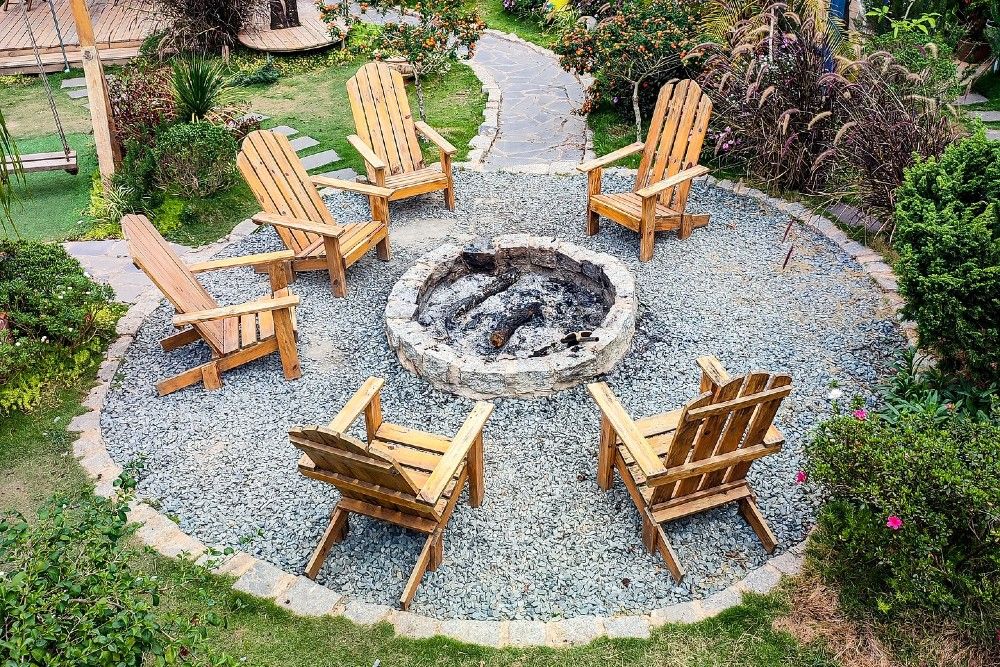
Wood fire pits are best for wide open spaces, in an open backyard, or on a stone or cement patio. As a general rule, trees and other objects, such as patio furniture, should be at least 10 to 15 feet away from the fire pit. Check with your local municipality for regulations on wood fire pits. Regulations may include distance requirements from property lines or trees, burn restrictions on certain materials, and/or supervision and proper extinguishing of the fire and embers.
Gas Fire Pits
Gas fire pits are a popular option due to their convenience, clean burn, and lower chance of fire risk. They are ideal for those with allergies and those living in an urban environment, as there is no smoke or sparks. The flames of a gas fire pit are just as intoxicating to watch flicker, and they allow you to kick back without having to worry about throwing a log on the fire before it goes out. Gas fire pits are easy to light and provide a variety of options, from propane to natural gas, as well as temperature controls. The best part is that there is no dealing with ash.
The downsides of a gas fire pit are the cost, the need for professional installation, and all the decisions associated with installing the pit. You may also need to obtain a permit, depending on your location. The fire pits themselves can range between $150 to $1,200, not including the cost of gas and installation.
Consult your local gas professionals to ensure the fire pit you purchase is compatible with the fuel supply. Smaller spaces may only require 40,000 to 50,000 BTU, but larger spaces may need as much as 200,000 BTU to properly heat. However, if you purchase a burner with too high of a BTU, you may end up with a smaller fire than you wanted. For an easy-to-light switch versus a match-lit, or to light the pit from your phone with bluetooth, you will also need power in the area.
All of these decisions are important to think about and also contribute to the longer timeline for installing a gas fire pit. They also aren’t easy to move, so take the time you need to make sure you find the perfect fit for your space. One final consideration is that gas is not a renewable source of energy like wood.
|
Pros:
|
Cons:
|
Best Spaces for Gas Fire Pits
Gas fire pits are ideal for many spaces, from small patio spaces to larger backyards. With a wide range of options, from round and square to the popular fire tables (in 18 to 60-inch options), you can pick the size of the gas fire pit that works for your space. Gas fire pits are much safer as they don’t emit sparks, so you can safely place furniture about 2 feet away from a gas fire pit. They do require more headroom, about 6 to 10 feet, but can even be set under a canopy.
You can usually install gas fire pits right on wood patios, grass surfaces, concrete, and a variety of other outdoor options. Since gas fire pits don’t produce heat at the bottom like wood fire pits, you don’t need protection for the surface you place it on. Always check and follow specific manufacturer recommendations.
Safety Tips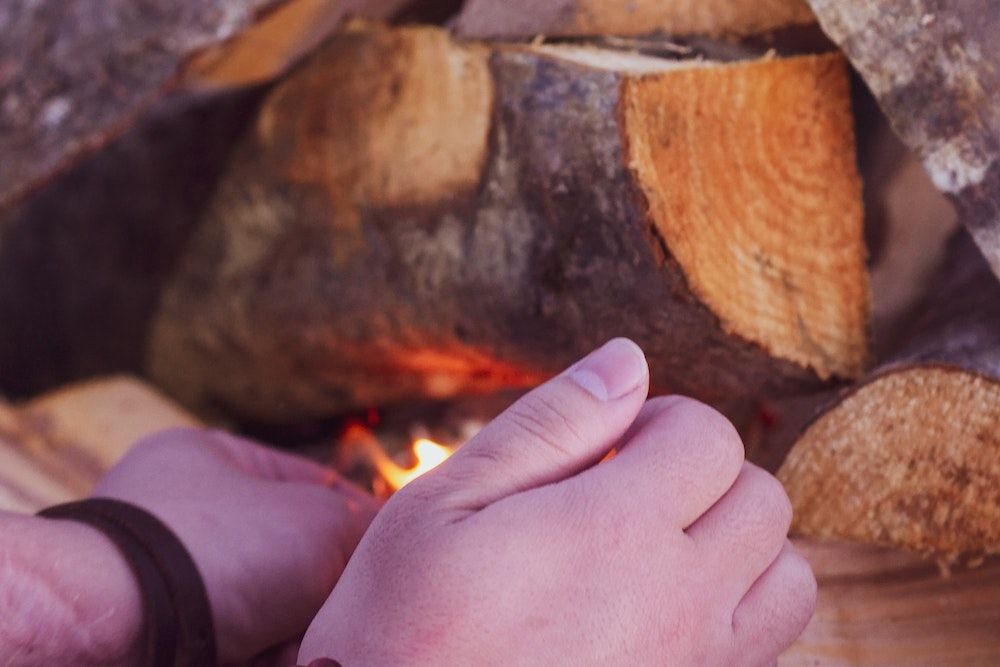
Once you have chosen the perfect fire pit for your space, it’s important to follow a few safety tips to enjoy the flames to the fullest. Always check your local municipality for burn restrictions and regulations. When using a wood fire pit, use a cover to reduce sparks, use seasoned dry wood, and never burn yard waste or other items. Keep an eye on the weather, and avoid lighting fires during high air quality alert days, or if there are strong winds. When debris builds up, you will also need to clean out your wood fire pit. Clean out the pit, and then scrub it with soapy water, rinse, and let dry before using again. If your fire pit is stone, you may need a stronger solution, such as one part muriatic acid mixed with 10 parts water.
For gas fire pits, do not burn other objects over the fire, including food. If your pit comes with a cover, be sure to use it when the pit is not in use, as this will help to reduce wear and tear from the weather. Following the manufacturer's recommendations, be sure to regularly clean your unit when it’s not in use. It’s also a good idea to check the line for gas leaks, and have the pit serviced by a professional once a year, or as needed.
Add Flame to Your Space
Whether you prefer the smoky scent of the classic wood fire pit, or the convenience and clean burn of the gas fire pit, there are many options and considerations when installing a fire pit in your space. Wood fire pits offer affordability, natural ambiance, and the option to cook over the flames. Gas fire pits are usually easier to light, safer, and provide a clean burn, perfect for those with asthma or allergies. Regardless of which you choose, you are sure to enjoy many conversations around the dancing flames.
What fire pit do you prefer in your space? Wood or gas?

